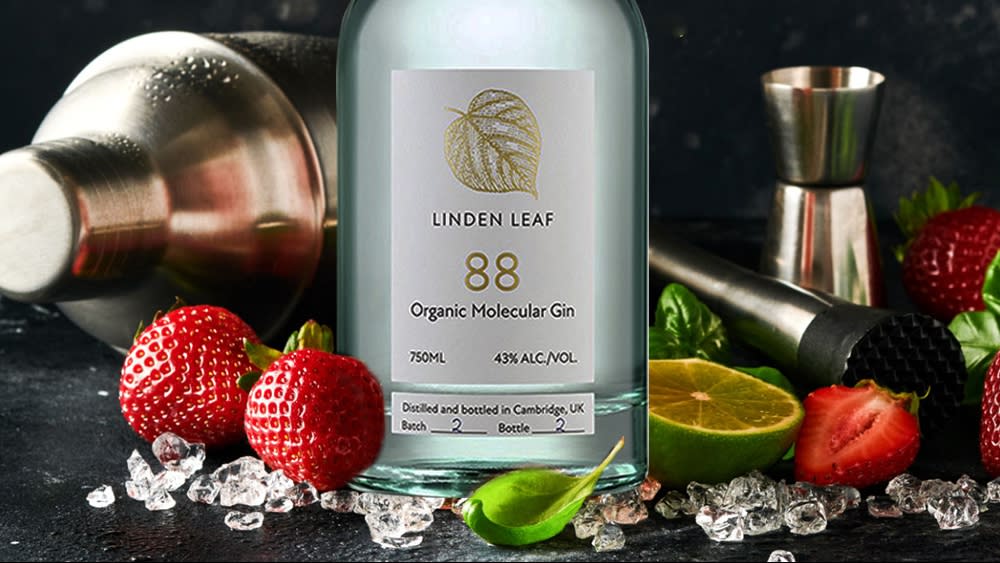Three Cambridge PhDs Created This Gin and Vodka by Isolating Flavor on a Molecular Level

Distilling spirits is a science based on chemistry, math and exact proportions—something a trio of Cambridge science PhDs took to heart when they created their UK-based brand, Linden Leaf. The vodka and gin are now available in the US for the first time, and the process behind making the booze is quite interesting.
Food-obsessed founders Matthew Webster, Mukund Unavane and Paul Bennett decided to try to isolate exactly what makes a botanical or fruit taste the way it does by breaking it down to a molecular level. This involved figuring out what makes an orange taste, well, “orangey” (2 mm of the outer peel and not the pulp, according to the brand) or how to get the “limiest” lime possible, to use some highfaluting science terms. “Admittedly, we opened up a scientific Pandora’s box when we started chasing exactly which molecules made our favorite food and drink taste the way they do,” said Webster in a statement. “But countless experiments and testing have led us to a Molecular Flavor Atlas, which we use to create what I believe are the most harmonious, flavorful spirits possible.”
More from Robb Report
Hendrick's Gin Is Saving Rare Cucumbers to Keep the World's Cocktails More Interesting
This New Barrel-Aged Gin Spends More Time in Oak Than Most Bourbons
The Linden Leaf team calls their process cold extraction, and it involves reducing the pressure inside the still to a point that is lower than the peak of Mt. Everest to allow the extraction of flavor at low temperatures, thereby avoiding damaging them with heat. Then instead of just relying on a regular old human nose (which is a pretty good instrument, no disrespect), gas chromatography is used to separate the mixture into components so each can be isolated. And finally, a mass spectrometer is used to actually isolate the molecules responsible for each smell and flavor.
The two new products are 88 Organic Molecular Gin and Singularity Organic Molecular Vodka. Gin in particular is entirely based on flavor extraction, as botanicals are usually macerated in the spirit or redistilled to infuse it with flavor. This gin is called 88 because it’s supposed to feature that number of individual flavor molecule notes derived from 28 different botanicals including yuzu, calamansi, grains of paradise, Aztec sweet herb and, of course, juniper. The vodka, on the other hand, was made with mouthfeel top of mind. So the team focused on the pH and mineral content of the water, using a mash bill of wheat, barley, rye and spelt and distilling it five times.
Both spirits are launching in bars, restaurants and retail outlets in New York, Colorado and Florida, but are also be available for purchase online. And don’t worry, an advanced degree is not necessary to enjoy them.
Best of Robb Report
The Ultimate Guide to Wagyu Beef, the World's Most Luxurious Steak
Why a Heritage Turkey Is the Best Thanksgiving Bird—and How to Get One
The 10 Best Wines to Pair With Steak, From Cabernet to Malbec
Sign up for Robb Report's Newsletter. For the latest news, follow us on Facebook, Twitter, and Instagram.

 Yahoo Movies
Yahoo Movies 
